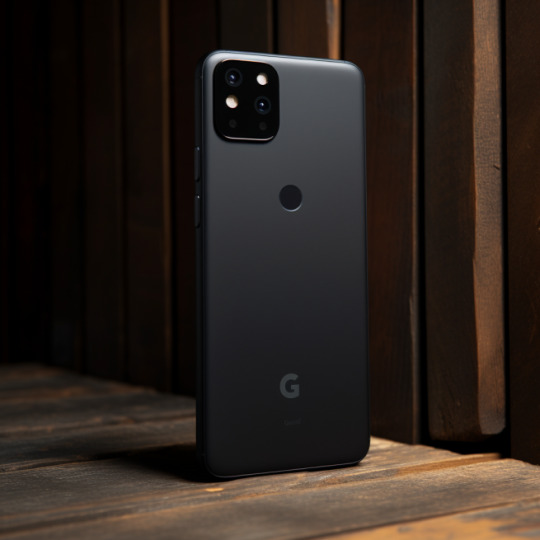#Pixel4aOptimization
Explore tagged Tumblr posts
Text
Optimizing Performance: Unlocking the Full Potential of Your Used Google Pixel 4a

Your Google Pixel 4a is a powerful device, capable of delivering a smooth and responsive user experience. Whether you've just acquired a used one or have been using it for a while, there are ways to optimize its system settings for peak performance. This comprehensive guide'll explore strategies and tweaks to help you get the most out of your Pixel 4a. By the end of this article, you'll have the knowledge and tools to ensure that your device operates at its best.
Understanding Pixel 4a's Hardware and Software
Before delving into optimization techniques, it's essential to have a basic understanding of the Google Pixel 4a's hardware and software components that influence its performance.
Hardware Highlights:
The Pixel 4a is powered by the Qualcomm Snapdragon 730G, a capable mid-range chipset that strikes a balance between performance and power efficiency. It boasts 6GB of RAM, allowing for smooth multitasking and app performance, even when switching between multiple applications. With 128GB of internal storage, you have ample space for apps, photos, and videos.
Software Features:
Google Pixel devices run a clean, near-stock version of Android, providing a bloatware-free experience with fast updates and optimizations. Google Assistant is at your disposal, ready to assist with tasks and provide voice-activated support. Adaptive Battery and Adaptive Brightness are two intelligent features that use machine learning to adjust battery usage and screen brightness based on your habits and preferences.
Performance Optimization Tips
Now, let's explore various tips and strategies to optimize your Pixel 4a's performance:
Regular Updates:
Ensure your device is running the latest Android version by regularly checking for system updates in the device's settings. Updates often include performance improvements and security enhancements.
App Management:
Review your installed apps and uninstall any that you no longer use. Unused apps can consume storage and potentially impact performance. Limit background processes by restricting apps from running in the background unnecessarily.
Storage Optimization:
Periodically clear cache and unnecessary files from your device to free up storage space. You can use the built-in "Files" app for this purpose. If you use Google Photos for backup, ensure that you have optimized your settings to store photos and videos at a lower resolution if storage space is a concern.
Adaptive Features:
Keep Adaptive Battery enabled to allow the device to learn your usage patterns and optimize battery life. Use Adaptive Brightness to adjust your screen brightness automatically based on your preferences and environment.
Battery Optimization:
When your battery is running low, activate Battery Saver Mode to limit background processes and extend battery life.
Display Settings:
The Pixel 4a features a 60Hz screen refresh rate. Consider keeping it at this standard setting, as higher refresh rates can consume more battery.
Animations:
Reducing or turning off system animations in the developer options can make your device feel more responsive. Go to Settings > About phone > tap "Build number" seven times to unlock developer options.
App Updates:
Keep your apps up to date through the Google Play Store. Developers often release updates that include performance enhancements and bug fixes.
Security and Privacy:
Regularly update your device's security patches to protect against potential vulnerabilities.
Factory Reset (As a Last Resort):
If you encounter significant performance issues that cannot be resolved through other methods, consider performing a factory reset to start fresh. Be sure to back up your important data before doing this.
Advanced Optimization Techniques
For users who want to take performance optimization a step further, here are some advanced techniques:
Developer Options:
Access the Developer Options mentioned earlier and explore additional settings for performance tweaks. However, be cautious, as some settings can impact device stability if misconfigured.
Custom ROMs and Rooting:
Enthusiast users may explore custom ROMs and rooting for advanced control over their device's performance. Keep in mind that these actions can void warranties and carry risks, so proceed with caution.
External Storage:
If you have a lot of media files, consider using external storage, such as a microSD card or external hard drive, to offload large files and free up internal storage.
Game Mode and Performance Mode:
Some devices offer game or performance modes that allocate more resources to gaming or demanding tasks. Check if your Pixel 4a has such modes and use them as needed.
In conclusion, optimizing the performance of your used Google Pixel 4a involves a combination of system settings adjustments, app management, and regular maintenance. By following these tips and strategies, you can ensure that your device operates at its best, providing a smooth and responsive user experience.
Performance optimization is not a one-time task; it's an ongoing process. Regularly monitor your device, stay up to date with software updates, and adapt your settings as needed to suit your usage patterns. With proper care and attention, your Pixel 4a can continue to deliver excellent performance throughout its lifespan.
0 notes